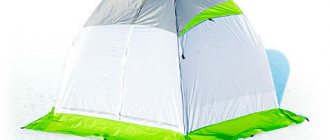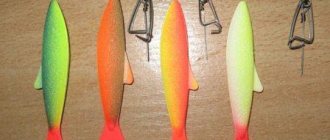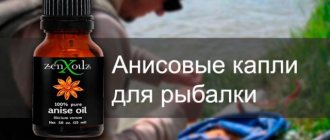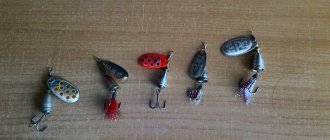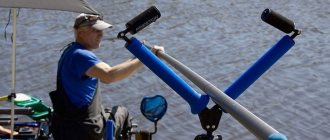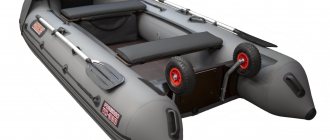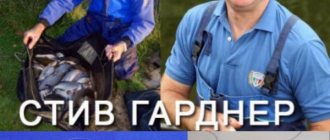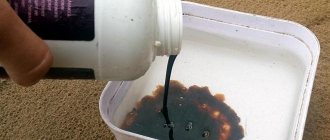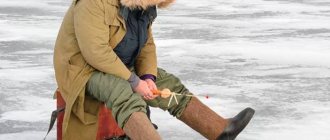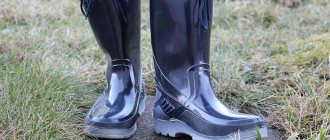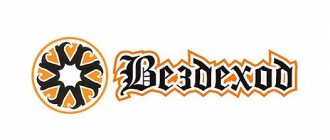We often find these names on tags and labels. But not everyone knows what they mean.
Why do you need to know this?
It's simple.
The characteristics of shoes directly depend on the materials from which they are made. For example, do your shoes get wet? What time of year can it be worn? How to dry it properly? Where to store?
And since almost all shoes are made using these four materials - PVC, EVA, TEP and PU - it is simply necessary to know what stands behind these abbreviations.
But first, one important point.
All these materials can be present in shoes in different ways:
1. Shoes are made entirely from these materials (they are also called “polymers”). For example, boots or galoshes.
2. Materials are used only for the manufacture of the lower part - for example, overshoes in snow boots.
3. Materials are used only for making the sole. For example, in boots or sandals.
And each time the choice of one material or another has a basis.
So, let's figure out what PVC, EVA, TEP and PU are.
PVC, or polyvinyl chloride
Often rubber boots are made, in fact, not from rubber, but from PVC. A person without experience will not even be able to tell them apart at first glance.
What is important to know about this material.
PVC, like rubber, conducts heat well.
Therefore, it is recommended to wear such shoes mainly in summer.
In spring and autumn the maximum is +5ºС. And then - preferably with warm socks
Below +5ºС, feet freeze in PVC shoes.
But what do mothers do when the first snow falls and immediately melts? Or in the spring, when there are icy puddles and slush all around?
That’s right, they put the child in rubber boots that protect his feet from water. But even warm socks or fur insulation cannot save you from the cold.
It is precisely for such situations that EVA shoes are ideal.
Features, nuances and advantages of vinyl chloride
PVC material is a type of plastic that is highly resistant to acids, alkalis, and many oils. Good density and temperature conditions guarantee long service life. Currently, the presented type of base belongs to the group of universal ones.
Modern PVC shoes have the following important advantages :
- Easy to clean . No special detergents are required to clean rubber. In most cases, using water is sufficient.
- Not afraid of mechanical damage . The products are practically invulnerable; they are difficult to puncture or tear due to their increased density.
- Weight, flexibility and waterproofing , providing ease of use. In most cases, the ankle boots cannot be felt on the feet.
- A wide variety of colors that allow you to choose the most interesting solution. This helps make the uniform stand out and match the costume design.
Now the material is used for the production of boots, ankle boots, galoshes and anti-slip soles. Among the negative aspects, exposure to ultraviolet radiation stands out, which reduces strength and elasticity.
EVA, or ethylene vinyl acetate
EVA material (unlike PVC) conducts heat poorly. Therefore, you can wear EVA shoes not only in summer, but also in winter. It is no coincidence that connoisseurs of winter recreation and especially fishermen love it so much.
Foamed ethylene vinyl acetate (EVA) is one of the most practical and environmentally friendly materials for making shoes. It has a unique structure: millions of micropores filled with air make it light and elastic.
pros
EVA is a composite polymer material whose popularity is due to a large number of advantages. It is used in various areas of life, incl. in the production of footwear (sports, hiking, orthopedic, everyday, intended for fishing and hunting).
The main advantages of ethylene vinyl acetate are:
- Light weight. Shoes made from EVA are several times lighter than products made from rubber, polyurethane or PVC. This allows the material to be used for the production of children's and sports shoes.
- Good thermal insulation. Thanks to its porous structure (the presence of microscopic air bubbles), the material perfectly retains heat during the cold season.
- Elasticity. EVA is considered one of the most elastic materials, which is even suitable for creating orthopedic products. Shoes made from this material have excellent shock-absorbing properties, are soft and comfortable. You can walk long distances in EVA boots and sneakers without fear of your feet getting tired.
- Waterproof. EVA is a polymer with a homogeneous structure that easily prevents water from getting inside. Additional protection is provided due to the absence of joints, seams and other connections. All products (individual elements or entire shoes) are produced using the continuous casting method, so there is simply nowhere for moisture to get in.
- Hygiene. EVA is resistant to all types of bacteria and fungi. Products made from it do not rot, do not mold, and do not cause allergic reactions.
- Easy to care for. Maintaining the original appearance is easy. It is enough to remove dirt from time to time using a rag or sponge dipped in water. Insulating insoles and liners are easy to wash and dry quickly.
Besides all of the above, EVA shoes can look quite attractive. The stores offer products for adults and children in different colors and styles. This allows everyone to choose the model that meets their wishes and requirements. As for the sole, it can be combined, which guarantees the best grip on the surface. For example, among fishing boots there are often soles made of EVA + TEP, which almost do not slip in winter.
Properties and benefits of EVA
Easy. Thanks to air bubbles, the material is lightweight, for example, it is 4 times lighter than PVC, which is considered very light. Waterproof. The material does not allow water to pass through and does not crack over time. And thanks to the injection molding production method, EVA boots do not have a single seam where moisture could penetrate. Thermal insulation. EVA is an excellent heat insulator. Shoes can be worn without insulation at above-zero temperatures. When it’s frosty, a sock-liner made of wool or fur is inserted into the boots. Elastic. Ethylene vinyl acetate is elastic, flexible, perfectly absorbs when walking and retains these properties at temperatures down to -60 oC. It is used to make orthopedic shoes even for the smallest children. Hygienic. EVA is “not interesting” to bacteria and fungi, so these shoes are ideal for people with sensitive skin on their feet and allergy sufferers. It is used for medical laboratories, where it is important to maintain sterility. Reliable. Oils, fuels, alkalis and even some acids cannot harm the material. In addition, it does not conduct electricity. Therefore, safety shoes made of EVA are used in industrial workshops and gas stations.
What is EVA
Recently, several well-known shoe manufacturers have launched lines of fishing winter and demi-season boots made of EVA / EVA - ethylene vinyl acetate. EVA is an elastic and lightweight material with a porous structure.
The undoubted advantages in relation to fishing include the following properties of the EVA material:
1. Excellent thermal insulation properties. They are due to the fact that EVA is a porous material containing many microscopic air bubbles in its structure. It is thanks to them that the EVA material retains heat so well. 2. Shock-absorbing properties. EVA bends and does not break, does not lose elasticity and resilience at the lowest temperatures, down to -60 degrees Celsius. 3. Resistant to oils and solvents. This allows anglers not to be afraid of being left without shoes while refueling a snowmobile or, for example, if you are filling a gas tank when fishing in a motor boat in the spring or fall. 4. Light weight. Shoes made of EVA are almost 4 times lighter than similar boots made of PVC, and almost 6 times lighter than the same boots made of molded thermorubber. You can compare, for example, boots made of EVA from the company Nazia, which produces fishing equipment, with the same boots made of thermal rubber - the difference is felt immediately. 5. Waterproof. You don't have to worry about EVA leaking water. You can move in water or through slush on ice without any fear.
But even such a wonderful material cannot have only advantages. There are also disadvantages. They are as follows: 1. Weak puncture resistance. Due to the fact that EVA material is porous, it is easy to puncture. This means that such boots must be used with caution, for example, when moving through the forest. For hunters, for example, special boots are made from EVA, reinforced and hardened, which allow you not to be afraid of an accidental puncture by a twig. 2. Insufficient anti-slip properties. Due to the fact that EVA fishing shoes are produced by injection molding, the surface of the boots is smooth. Including on the sole. Because of this, EVA boots are quite “slippery”, and walking in them on bare ice is quite inconvenient. Although recently manufacturers have been making the soles of their boots more ribbed, which provides relative comfort on ice.
And one moment. Since EVA shoes are gaining popularity among fishermen, hunters and tourists, everyone who is not too lazy is starting to produce them.
And if leading manufacturers (Vezdekhod, Norfin, Nordman, Lemigo, etc.) are able to ensure proper technological production, then “garage manufacturers” do not do this. This means that boots “that seem to be made of EVA” bought at the nearest market may turn out to be a pitiful semblance of normal shoes and “break” during the next fishing trip.
Hence the conclusion, try to buy EVA shoes from a trusted manufacturer.
Where is ethylene vinyl acetate used?
In the automotive industry, their EVA makes floor mats. In dentistry there are mouthguards for correcting bites, in diving there are mouthpieces for breathing. In sports - various fasteners, protective elements for knees and elbows. In the production of school goods - orthopedic backs for backpacks, in orthopedics - bandages, corsets, belts, insoles for shoes.
Snow boots, galoshes, slates, and EVA boots have become extremely popular. These are comfortable, practical and safe shoes that are suitable for children, men and women of all ages. It keeps feet dry in slush, warm in cold weather, protects against accidental impacts, and is resistant to road chemicals.
Benefits of EVA shoes
- The material is easy to paint and can be given any shape, so the products are stylish and can be combined with urban clothing. These shoes are worn for daily trips to work in the slush, and they are worn when walking with pets in the park. It is ideal for hunting, fishing, and tourism, as the legs in it do not get tired during long treks and remain warm and dry even after standing in cold water for a long time. Due to its light weight, it is convenient to work in the garden. The soil does not stick to the smooth surface. Boots and snow boots are comfortable and absolutely safe for children. You can walk through puddles in them without fear of getting sick.
Characteristics and scope of application
EVA material is in great demand in the production of children's, orthopedic, beach and summer shoes. The popularity of ethylene vinyl acetate is due to its characteristics, namely:
- lightness (for example, EVA is four times lighter than PVC, and cast thermorubber is six times heavier);
- high wear resistance (this material is resistant to abrasion and other mechanical stress);
- resistance to chemicals found on the road (gasoline, oil, etc.).
- elasticity, elasticity;
- good shock absorption;
- hygiene (resistance to fungi and bacteria);
- dielectricity;
- hypoallergenic;
The listed characteristics make EVA one of the most popular materials used in the manufacture of orthopedic shoes for adults and children. The sole, made of ethylene vinyl acetate, is resilient, flexible and lightweight. It is comfortable to walk in such shoes even over long distances, as your feet practically do not get tired in them. This is why doctors recommend wearing shoes with this type of sole even for healthy people: it helps maintain the health of the musculoskeletal system and prevents the development of all kinds of diseases.
EVA is also used to create boots for active pastimes - sports, fishing, hunting and other winter recreation. Manufacturers claim that their products can withstand temperatures down to -60 degrees Celsius.
EVA is often used in the creation of work shoes. Products made from ethylene vinyl acetate are not afraid of low and high temperatures and are resistant to acids, alkalis and petroleum products. In addition, such shoes do not cause discomfort and are suitable for people who spend most of their working time on their feet. This is ensured thanks to the softness and flexibility of the sole, as well as the efforts of manufacturers who take into account the features of the anatomical structure of the foot.
The sole, made of ethylene vinyl acetate, can have one or two layers. In this case, polyurethane or a combination of different materials is used, for example, polyurethane and thermopolyurethane. The key advantage of polyurethane foam is excellent thermal insulation. As for thermopolyurethane, it is used on the running part of the sole. Particularly popular are two-layer soles with a rubber bottom and an EVA middle layer. The combination of such materials is lightweight, has improved shock-absorbing properties and provides excellent contact with the ground in all weather conditions.
Flaws
You can often hear that boots made of ethylene vinyl acetate slip in the snow and get punctured easily. The statement is true only for handicraft products, where they do not pay attention to quality. Shoes from the Darina factory are free of these shortcomings. Special protectors on the soles make our products stable on slippery roads, and anti-puncture insoles reliably protect your feet.
Our catalog is constantly updated with new models. You can view it on the website. Here you can request a price list, leave a request for a call back to the manager. For consultations and placing orders for shipments of any size in all regions of the Russian Federation, call (the call is free).
Depending on the insulation, EVA shoes can withstand frosts from zero to -70ºС. Your feet are warm and comfortable, even if you stand in snow or an icy puddle.
Children's boots and snow boots made of EVA are usually designed for frosts down to -15 ºС. This is quite enough to safely survive the snow porridge season. And in some regions this is quite enough to survive the winter.
In addition to its unique thermal conductivity, EVA is characterized by its extraordinary lightness.
Such shoes are 2-3 times lighter than PVC.
Outsole materials
Soles made of polyurethane (PU, PU).
Often called micropore, not very well versed sellers “semolina”. The material is porous, and the pores are visible to the naked eye, rough. The tread on the sole usually does not have clearly defined edges and lines, as if slightly “blurred” or melted.
Pros: Polyurethane has a very low density, so it weighs little and has excellent thermal insulation; the sole is very light and moderately flexible. It absorbs shock loads well and is quite wear-resistant. All these properties make polyurethane soles an excellent choice for a consumer who cares about comfort, who wants to do without buying warm winter shoes, spends no more than an hour outside and does not change shoes when coming to the office. One of the advantages is also its low cost, which is why it is very popular among manufacturers and sellers of cheap shoes.
Cons: The low density of the material also provides the main disadvantages. Because of this, it is impossible to make a thin polyurethane sole - it simply will not withstand the loads and will break; this sole needs thickness, which immediately reduces flexibility. Also, a thick sole may look good only on a demi-season or winter product. But for winter shoes, polyurethane is a bad choice - at low temperatures it becomes much less elastic, at temperatures of -20 degrees and below it cracks, breaks or even begins to crumble. The loss of elasticity is also reflected in the grip on ice and snow, and the shoes begin to slip. Plasticizer cannot be added to polyurethane, so it is impossible to get rid of these disadvantages.
Shoes with such soles are not suitable for long-term wear in winter. If the temperature drops below -30 degrees, there is a risk of being left outside without any soles at all. The well-known UGGs have a polyurethane sole and look like winter shoes, but are not suitable for wearing in real cold weather. If the buyer says that he walks a lot in winter, that he prefers to walk to work and he needs something very warm, then, despite the excellent thermal insulation characteristics, such a product is not worth recommending.
Shoe example:
3-722-1 All-season shoes, genuine leather
4-4401-1 “Perfection” Winter boots, natural fur
4-526-1 “Perfection” Summer shoes, genuine leather
9-5175-1 All-season shoes genuine leather
Thermo polyurethane (TPU) soles.
Also called thermoplastic polyurethane. Some sellers and even large wholesale companies and manufacturers mistakenly call tunit and leather fiber. The material is very dense, weighty, smooth to the touch (where there is no pattern applied). In combination with such a sole, a wood-look heel is often used, made of thick special cardboard with impregnation against getting wet and swelling. The sole itself is usually thin, and the tread has very clear edges and patterns. Manufacturers often apply paint to resemble natural leather on the midsole.
Pros: Thermopolyurethane is a wear-resistant material and is very difficult to deform, cut or puncture. The high density makes it possible to produce soles with complex patterns that look very beautiful. The material is non-slip and provides good grip. Due to the peculiarities of production technology, it is often used to make large-sized shoes. It fits perfectly on dress and classic shoes; most often, beautiful shoes with clearly defined shapes, complex seams, and expensive leather uppers have soles made of this material. One of the main advantages of such shoes is aesthetics, they look beautiful and expensive. These properties make products with TPU bottoms an excellent choice for the consumer who needs beautiful shoes, perhaps for the office or for an evening dress code.
Cons: The specific gravity and high density of thermopolyurethane are also a disadvantage - the sole is heavy, the elasticity is very low, and the thermal insulation is poor. Shoes with such soles will not be warm even with a fur insole and increased thickness. The density also affects the shock-absorbing properties - the shoes do not spring, the load on the joints and spine increases, and at the end of the day you feel tired in the feet. Not suitable for consumers who spend a lot of time on their feet. Contraindicated for long walks. This sole is usually attached manually using the adhesive method, and the percentage of defects associated with peeling off and tearing along the edge of the footprint is higher.
Shoe example:
12-8510-6 Winter boots natural fur
3-717-5 All-season shoes genuine leather
3-668-1 All-season shoes genuine leather
9-95601-6 Winter boots natural fur
Combination sole
In order to get rid of the disadvantages of polyurethane (PU) and thermopolyurethane (TPU), some manufacturers combine these materials when making soles. The bottom layer in contact with the ground is made of TPU, and the top layer, to which the upper of the shoe is attached, is made of PU. The sole has clearly visible signs of multi-layering: different textures of materials that can be distinguished visually and to the touch.
Pros: All the advantages of these two materials are present: excellent thermal insulation due to porous polyurethane, good adhesion to any type of surface and resistance to abrasion and damage due to dense thermopolyurethane. The low overall weight of the sole and good shock-absorbing properties relieve the load on the motor system. Excellent for the production of winter, demi-season shoes, all-season shoes with thick soles. Separately, it is worth mentioning lightweight sneakers with anti-slip inserts. If the consumer likes the shoe visually, he will not be disappointed with the performance characteristics.
Cons: The sole actually consists of two parts, each of which requires its own technology and equipment, which makes the production process twice as expensive. The high cost makes this sole not very attractive for the manufacturer, especially if it is in the lower price segment. Often, manufacturers of cheap shoes paint the bottom layer of a regular polyurethane sole in order to deceive the sophisticated buyer and pass it off as a more expensive product. Sneaker manufacturers typically use cheap upper materials to reduce overall production costs. There are no downsides for the consumer.
Shoe example:
08-030-5 all-season sneakers genuine leather
08-020-5 all-season sneakers without lining
08-020-1 all-season sneakers without lining
08-021-5 summer sneakers without lining
Thermoplastic elastomer soles (TEP, TRP)
The material has a porous structure inside and a denser and almost pore-free structure on the surface. The surface is rough to the touch, in places pores and pits are visible, which look like burst bubbles. The pattern on the sole usually has uneven, seemingly sloppy edges, and the tread is deep.
Pros: The internal porous structure of the material provides excellent thermal insulation and shock absorption. The shoes are springy, easy to wear and comfortable. Great for long walks, often used in outdoor shoes. Brands such as Columbia and Caterpillar use them on almost all of their products. The material itself can be reused, which allows manufacturers to easily remake a batch of soles if necessary. It has an extremely low cost when producing large quantities, allowing the production of inexpensive products, which is why this sole is the most popular among cheap and large factories in China. Wear resistance and abrasion resistance are well above average, so despite being cheap, these products last a long time.
Cons: The material looks sloppy and unattractive, the edges are uneven, such a sole can only be used on porous and thick leather or artificial leather. This makes it impossible to use it on beautiful dress shoes. Due to technological limitations in the choice of upper materials, the color range of products is small, and visually the finished product is not very aesthetic.
Shoe example:
3-616-5 Summer shoes genuine leather
12-6306-1-LUX Luxury all-season genuine leather shoes
12-6304-1 All-season shoes, genuine leather
12-6304-1-LUX Luxury all-season genuine leather shoes
Soles made of polyvinyl chloride (PVC, PVC)
The material is smooth to the touch, usually translucent, heavy, and looks good. The tread is simple, with simple geometric shapes, the edges are not very smooth.
Pros: PVC soles are very wear-resistant, strong, do not deform and do not slip. They are very easy to manufacture, and it is easy to add various impurities and plasticizers to the composition, so you can achieve virtually any elasticity. The oil-resistant material makes the sole ideal for safety shoes. Often used in children's shoes.
Cons: PVC is a very heavy material and the shoes are made accordingly. Despite the good shock-absorbing properties, it is difficult to walk in these shoes for a long time and your legs get tired. Over time, the plasticizers evaporate, and the sole loses its elasticity and begins to crack. Considering that a product usually spends some time before sale in warehouses or on store shelves, it may happen that the consumer receives a product that has already lost some of its positive qualities. PVC is not frost-resistant and can burst at a temperature of -20 degrees. The material does not adhere very well to the top of shoes made of genuine leather, so it is more often used on shoes made of leatherette.
Shoe example:
14-800-12 Summer ballet shoes genuine leather
14-733-1 All-season moccasins without lining
14-770-05 Summer ballet shoes genuine leather
14-800-3 Summer ballet shoes genuine leather
Ethylene vinyl acetate (EVA) soles
The material has a soft, porous (foam) structure, very light, slightly rough to the touch. The tread can be completely different, the lines and edges are smooth and neat.
Pros: EVA has a very low specific gravity, the sole is almost weightless. Excellent shock-absorbing properties, ability to absorb and distribute loads, good elasticity. Used in almost all types of shoes, except dress shoes. It works especially well in sports and beach shoes - the Crocs brand makes all its products from this material. The sole gradually takes on the shape of the foot, which provides additional comfort. Thermal protection properties are also beyond praise. It will appeal to the consumer who most values comfortable wearing, walks a lot, and loves loose shoes.
Cons: As with polyurethane, the porous structure also provides negative properties. Despite excellent thermal insulation, winter shoes cannot be made from EVA - they are not frost-resistant, very slippery, the internal pore structure is destroyed in the cold, so they begin to crumble. The sole is very short-lived - it literally wears down over the course of a season. Its ability to take on the shape of the foot provides another disadvantage - the shoe becomes too loose, and if the consumer has foot or gait defects, then after a while the changed sole will emphasize them. If the buyer is expecting long-term wear, he will be very disappointed.
Shoe example:
08-040-5 all-season sneakers without lining
9-8011-5 all-season sneakers without lining
08-043-2 summer textile sneakers
13-011-1 Summer moccasins without lining
Thermoplastic rubber (TPR) soles
The material is rubber, made from synthetic rubber, stronger than natural rubber, modern technologies can make it of almost any plasticity. It can be rough to the touch or completely smooth - it all depends on the mold in which it was cast. The tread can also be of any depth, the lines and edges are very smooth and neat.
Pros: Thermoplastic rubber has fairly average density and specific gravity properties, and this is an advantage. The soles made from it are non-slip, have good shock-absorbing properties and relieve stress on the legs and spine, they are quite light in the standard version, and in the new generation of the material the weight has been reduced significantly. It resists abrasion quite well as standard, and when new technologies are used, the manufacturer provides a 5-year warranty on this part of the shoe. From an aesthetic point of view, the sole looks very good; it can be of any color, any shape and with any pattern. Used in almost all types of shoes. This material is almost always used in sneakers. The consumer, having chosen a product with this material, will most likely be satisfied with the performance characteristics.
Cons: The high cost of manufacturing the sole, the need to use very expensive equipment and special molds for each size makes this material not very popular with the manufacturer, or the manufacturer reduces the cost of the product by using very cheap upper materials, as is the case with sneakers. Not every buyer will understand why high-quality genuine leather sneakers should cost more than dress shoes, but that’s exactly how it should be. The material does not have very good thermal insulation characteristics, so winter shoes with such soles can be made, but only by adding thickness.
Shoe example:
01-W-20404-01Z “Jillionaire” Winter boots, natural fur
02-041-11 summer slip-ons without lining
9-9340-6 All-season textile boots
08-000-6 summer sleepers without lining
Soles made of leather (leather), tunit (tunit) and wood (wood)
These materials are combined in the article, since they are used less and less in modern production and have significantly more disadvantages than advantages. Leather and wooden soles are very easy to identify visually, while tunit soles look like rubber, but interspersed with another material, which is actually leather shavings, hence the second name - leather fiber. All these materials are inflexible, heavy, do not have shock-absorbing properties, do not retain heat well, are very slippery, and have terrible wear resistance. The only advantage of these materials is their status. The unsubstantiated myth that natural sole materials are better than artificial ones makes it possible to find buyers for products that are very expensive. You can also highlight a small plus of a natural leather sole - it is that it “breathes”, because leather is a natural membrane.
However, this is not quite true. The fact is that the organoleptic characteristics of shoes very much depend on the lining material and the material of the upper of the product. Leather is indeed a natural membrane, but only if it retains a top layer with pores that allow air to pass through and moisture not to pass through. Manufacturers of expensive shoes with leather soles use appropriately expensive upper material and also grain leather as a lining material. And such products really breathe, however, if you put a sole made of any artificial material on it, the consumer will not see the difference. That is why installing rubber prophylaxis on a leather sole does not in any way affect the consumer properties.
TEP, or thermoplastic elastomer.
This is frost-resistant thermorubber.
It is cooler than EVA, but warmer than PVC. Used as a bottom for snow boots.
Why do you need shoes made of TPR if you have warm EVA?
Firstly
, shoes made from TPR are considered more demi-season.
If it can be a little hot in EVA at -5 ºС, then in such snow boots you will be quite comfortable. Here, of course. Much depends on the composition of the insulation and the child’s activity.
Secondly
, TPR shoes are stronger than EVA.
It is much more difficult to damage. For example, if you spend active time with your child in nature, where there are a lot of branches or other sharp objects, it is better to do this in shoes made of TPR - the soles will be much more protected.
Third
, shoes made from TPR slip less than EVA.
But EVA is much lighter and warmer. For example, at -15C it is better to wear EVA shoes.
And, by the way, by October 2021 a new Nordman Cross model will appear.
Its sole is made of TPR. This means that snow boots, unlike their EVA counterparts, will not slide as much. The child will be comfortable and comfortable.
PU, or polyurethane
PU material is stronger than EVA. And it slips less. But a little heavier.
Warmer and lighter than TPE, but more expensive to produce.
Nordman shoes have PU soles in boots with a membrane (Gloss, Next, Smart), felt boots and Lumi boots.
Thanks to this, the shoes are lighter and warmer than their analogues. And it slips less.
By the way, to prevent the PU sole from slipping, you just need to wash it with warm water before using it for the first time.
What else is important to know about this sole?
It, unlike the TEP sole, is not glued, but molded.
This technology is called “direct tide”. She is popular in Europe. This is a sign of high quality shoes because the tide sole is reliable and durable.
